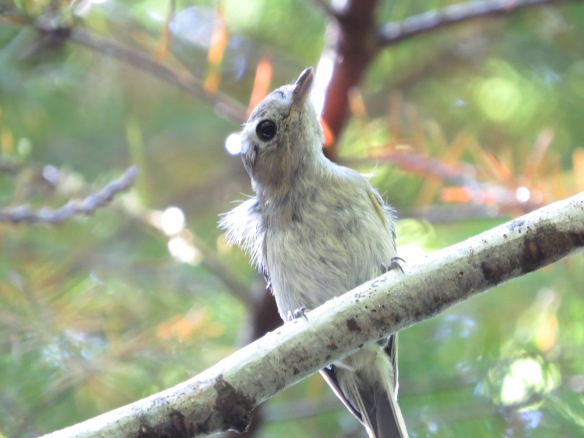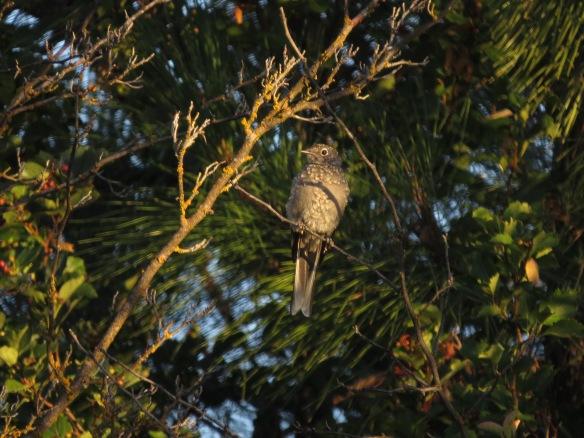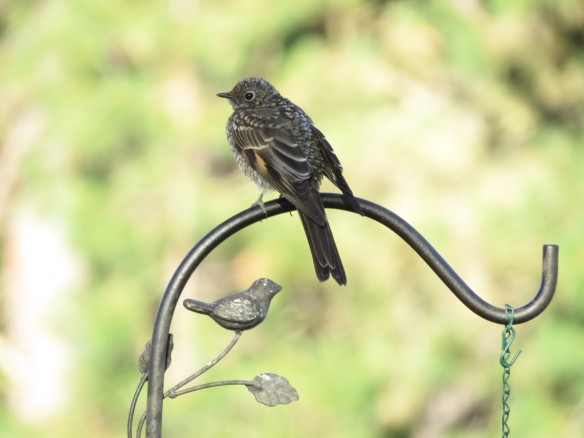Epic Summer Trip Part I: Conboy Lake NWR
No one warned me about summer birding.
Okay, someone warned me, but I didn’t think it could be this bad. Okay, it’s not “bad” exactly, but it’s pretty challenging. In the morning, there’s approximately one minute to find active birds before it becomes too damn blazing hot outside. And that one minute is around 5:00 am.
The birds have paired up and aren’t nearly as vocal as they were in early spring. And now they’re molting, looking rough, and hidden within the full-on tree leaves. Oh right, AND there’s a new generation of barely identifiable juveniles.
It’s no wonder some birders take the summer off. Or so I’m told.
Since this is my first summer and I feel I’m still getting started, I’m barreling through to see what I can find. This particular epic journey started at Conboy Lake NWR in Washington. The place is great. I went on a Saturday and had the entire refuge to myself (everyone else staying cool at the coast?). Anyways, it was birdy, challenging, and gorgeous.
Here’s some of what I saw as I hiked solo along the Willard Springs Trail.
What the hell funny looking bird is that? Oh right, juveniles. Took me a while to figure it out, but it’s a juvenile Townsend’s Solitaire. Thank goodness for that bright white eye-ring. A couple more cool shots of this cool bird.
Further along the trail, I spooked a flock of juvenile (or first-year) Red-winged Blackbirds.
In the shrubs I saw a juvenile Brown-headed Cowbird. And yes, since it’s a “brood parasite,” that’s probably it’s step brother or sister (or adoptive mother?), the Common Yellowthroat to the lower left.
The parents must be taking good care of their great big baby.
Another juvenile that took some effort to identify was this Dark-eyed Junco. It revealed it’s identity once it flew and I saw the tell-“tail” white outer tail feathers.
I saw one juvenile woodpecker and based on the darker shade overall, I think it’s a Red-breasted Sapsucker. I think.
But then a molting woodpecker flew to the same treetop. Update: consensus on this woodpecker leans toward Red-breasted Sapsucker. [I think this one is a Red-naped Sapsucker based on the red nape and white “mustache.” The white “eyebrow” isn’t clear but maybe it’s still growing in? Then does this make the nearby juvenile a Red-naped Sapsucker too?] Not sure.
A closer look of the molting bird. Hm.
A few non-juvenile birds who made an appearance.
- Brewer’s Sparrow
- Eastern Kingbird
- Cedar Waxwing
- Eastern Kingbird
- Update: Chipping Sparrow
- Cassin’s Vireo
- Cassin’s Vireo
- Sandhill Cranes
At one point, an intriguing bird flew overhead that I couldn’t catch on camera. I stopped by the refuge office to chat with the volunteers to see if they knew what it could be. I drew a helpful picture of the bird. It looked like this, except the vertical dark lines are white. See? Helpful. They had no clue what it was (and I don’t blame them).
It might have helped if I’d remembered to draw the body in. I figured out what it was after I left, a Common Nighthawk. Pretty much identical to my drawing. I would love to some day see one closer.
In total, two new birds (Cassin’s Vireo and Common Nighthawk) and another maybe new bird (Red-naped Sapsucker). No glimpse of a Long-eared owl (a beginner birder can dream), but a good start to an epic adventure. To be continued…
Tweets and chirps,
Audrey


























I knew right away that was a nighthawk by your drawing! Cool! Those juvies are hard! I think you summed it up with the 1 minute of birding in the morning and evening. Ugh.
Impressive you could interpret my chicken scratch, haha! Is it fall, yet?! I’m ready!
I love that place! Yeah, summer birding can be rough, but getting out of town helps quite a bit. Congrats on the nighthawk! They’re definitely one of the best birds of summer.
Your sapsuckers are Red-breasted. The red continuing down onto the breast from the head is telling and a Red-naped would have much more white showing on the face. That said, they’re pretty busted-looking and not exactly prime examples of the species.
Your tree sparrow is a Chipping. That area might get tree sparrows in the winter but in the summer it would be exceptionally rare. In your photo there’s that little white spot at the base of the bill with black lines extending from it, and tree sparrow would not show that.
Anyway, great birding! Looking forward to some kind of Alaska post soon I hope?!
Awesome, thanks!! And I thought hairy vs downy was tricky. Apparently Red-breasted and Sapsuckers hybridize too. Molting-hybrid-juvenile, anyone? Heh. Nice tip on the sparrow too, thanks! So much to learn.
Yes, Alaska! Sooooooon.
I will say, don’t rule out a hybrid on the sapsuckers! I think your best bet will to be return in a few months and find them again and see what they look like. Easy, right??
[…] ← Previous […]
Summer birding is challenging and depressing for me without sound . I rely so much on voices, but the everywhere and nowhere of invisible juveniles does not count. Been to convoy twice and really enjoyed it. Glad to see you were keeping busy!
So true! I’m thankful for your heads up on the difficulties so it wasn’t such a shock. I should probably spend the rest of summer studying hawks and waterfowl! 🙂
Argh, you know I meant Conboy. You should go to Bonney Butte and watch hawks for a day! I want to go this year (between sept and oct). I will let you know if I do. Maybe we can get a CONVOY going. Heh heh.
I knew what you meant! I’m signed up for Audubon’s field trip to Bonney Butte! And of course, I would love to join your convoy up there too! Heehee. Can’t wait to check it out!